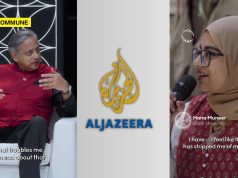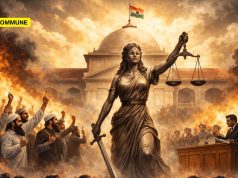
Elon Musk revealed on Tuesday that current Twitter “Blue verified” users would need to pay an $8 monthly fee in order to keep their premium “verified” status and use other exclusive features of the Twitter app.
Currently, Twitter Blue is available in the US, Canada, Australia, and New Zealand. Other countries, including India, do not offer the Twitter Blue paid subscription service. “In the nations where the premium feature is currently available, Twitter Blue can be availed at $4.99 per month and provides additional features like ad-free articles and a home screen icon that has a different color. An active Twitter Blue subscription gives you access to premium features like Undo Tweet,” as described by the company.
While discussing about the new pricing at the proposed $8.00, up from the current $4.99, Musk stated that “the price will be adjusted by country proportionate to purchasing power parity”. This could be an indication that Musk intends to bring Twitter Blue to more countries, including India, by pricing its premium Twitter perks in accordance with the average purchasing power of the country.
On multiple occasions since buying Twitter last month, Musk has announced the revamping of the verification process on Twitter. Musk informed that verified accounts will get “priority in replies, mentions and search, ability to post long video and audio, and half as many ads”.
Alluding to Twitter’s current “Blue” verification procedure, Musk tweeted “Twitter’s current lords & peasants’ system for who has or doesn’t, have a blue checkmark is bullshit. Power to the people! Blue for $8/month.”
The backlash started earlier this week when rumors of an exorbitant $20 monthly fee for verified Twitter accounts, began to circulate online. The Verge ( of VOX media), an American technology news website, had initially reported Musk’s plans to charge $20 per month for verification.
Reiterating his position to charge users a higher fee, the Tesla CEO and SpaceX owner tweeted, “To all complainers, please continue complaining, but it will cost $8.”
The Twitter Blue subscription was launched by the company almost a year ago as a way for users to view ad-free articles from certain publishers and make other tweaks to the app, including a different color for the Home Screen icon, etc.
On Monday, well-known American author Stephen King went viral with his reaction to a rumor that Musk wanted to charge verified users $20 per month to keep their “blue checkmark” status. “$20 a month to keep my blue check?” King tweeted to his 6.9 million followers. “Fuck that, they should pay me. If that gets instituted, I’m gone like Enron.” When a reader told King he could afford the fee, the best-selling author replied, “It ain’t the money, it’s the principle of the thing.”
On Tuesday, Elon Musk responded to the uproar, replying directly to King: “We need to pay the bills somehow! Twitter cannot entirely rely on advertisers. How about $8?”
Musk indicated that additional information providing clarity of intent and details of the proposed plan would be shared in the coming days: “I will explain the rationale in the longer form before this is implemented. It is the only way to defeat the bots & trolls.”
* A social “bot” is an automatic program that simulates human behavior on social networks. Social bots take part in discussions on Twitter or Facebook and act like human users. They spread content on a particular topic on social media – mostly for the purpose of influencing people’s opinions.
* Trolling is when someone posts or comments online to deliberately upset others, spread misinformation, or cause trouble.
Musk reiterated that paid verification was part of his plan to “destroy the bots” on Twitter. Back in the 2020 U.S Presidential elections, Twitter under a different CEO and management had fallen out of favor with many members of Donald Trump’s Republican party and conservative/right-wing Americans, expressing displeasure with Twitter’s censorship policies and claims of bot-influenced information in circulation as well as vigorous trolling. The previous Legal Head of the company had even banned the then President, Donald Trump. With Mr. Musk’s new policy, advocating more free speech and lesser regulation on Twitter albeit better control over bots and trolls, he wants to put nominally paid-for technology in place, for a better user experience, as he claims.
It decided to launch a beta version of Twitter verification, in the same year. “We do recognize an opportunity to improve Twitter user experience and clear up confusion beyond simply removing impersonation accounts once alerted. We’ll be experimenting with a beta preview of what we’re calling Verified Accounts this summer,” it had said in an official statement.
“Verified Accounts will feature a special seal. The experiment will begin with public officials, public agencies, famous artists, athletes, and other well-known individuals at risk of impersonation. We hope to verify more accounts in the future but due to the resources required, verification will begin only with a small set,” Twitter had further explained in 2009 regarding the verification feature.
Since then, social media verification techniques and processes have come a long way. Following Twitter, most other Social Media platforms began to introduce their own versions of user Verification on their sites.
– In 2011, Google+ introduced verification for “public figures, celebrities, and people who have been added to a large number of circles”.
– In 2012, Facebook started verifying customer accounts. Unlike Twitter, the process was not optional or voluntary. The platform prompted the users it selected for verification, to submit a widely accepted form of government identification. It also offered an option to use an “alternate name” to facilitate more visibility.
– In 2014, Instagram started the verification process after pop star Rihanna deactivated her account due to a fake profile. “Today, we’re excited to announce verified badges for celebrities, athletes, and brands, making it easier for you to connect with the authentic accounts you’re looking for. These badges will start rolling out over the coming days,” Instagram announced.
– In 2017, WhatsApp introduced a verification process for its business accounts. The verification is done based on the user’s phone number. It assigns a green tick/check mark, to the phone numbers.
– In 2018, Mark Zuckerberg of Meta ( parent company of Facebook, Instagram. WhatsApp) stated that any purchases of Political advertisements would be required to verify their user profiles. Also, the managers of individual and group pages on the platforms would be required to get themselves verified.
– In 2021, Koo, an Indian microblogging and social networking service, launched a yellow tick verification badge. The users could apply for verification by mailing their request to the technical team via a specified email address.
– In 2022, Koo launched a self-verification service where users could verify themselves using a widely accepted government ID.




